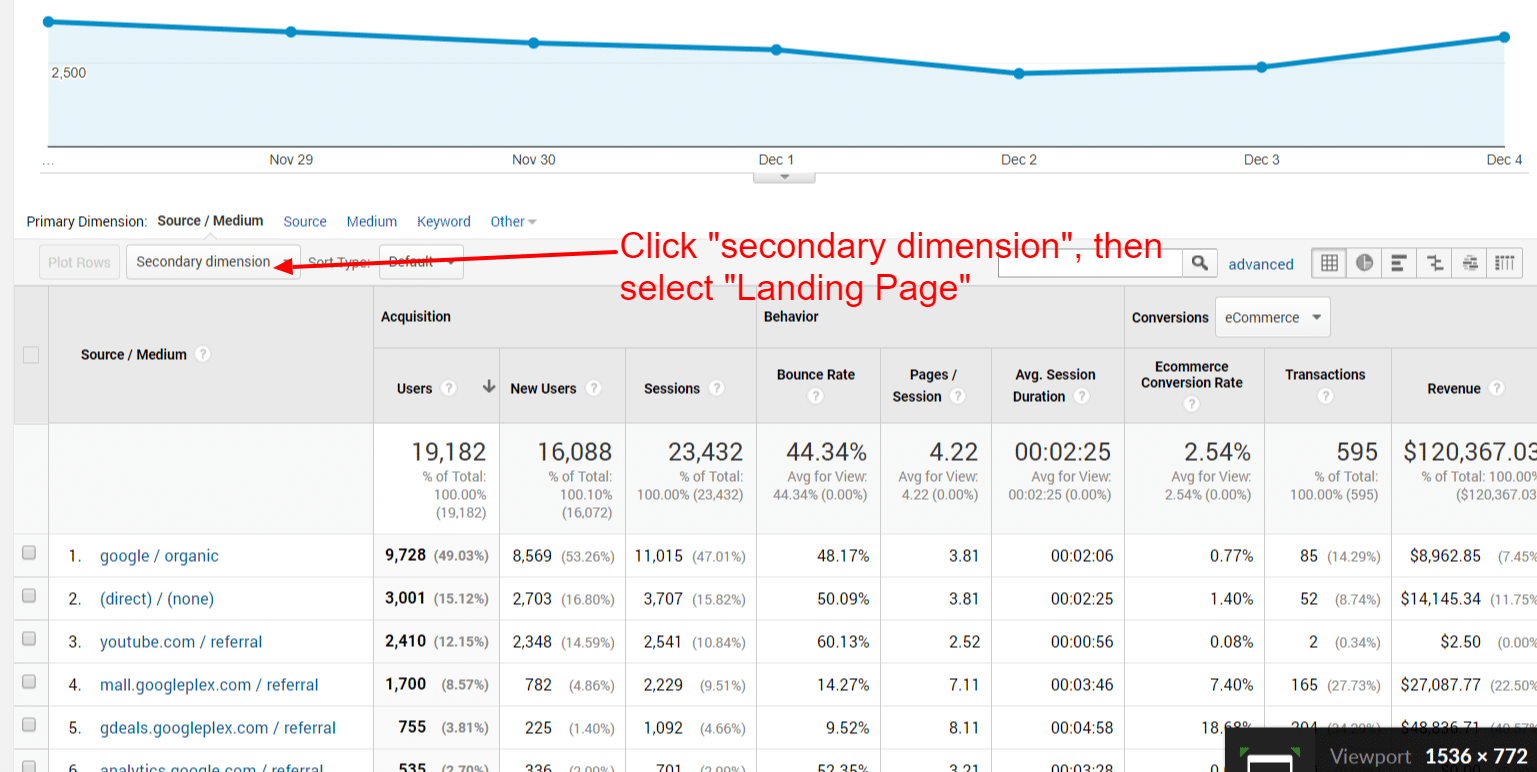Boost Your Information Evaluation with Secondary Dimension in Google Analytics
Boost Your Information Evaluation with Secondary Dimension in Google Analytics
Blog Article
Transform Your Analytics Method With Secondary Dimension in Google Analytics
By integrating second dimensions right into data analysis, a brand-new layer of insights emerges, shedding light on complex user habits and interactions. The calculated application of secondary measurements holds the crucial to unlocking a prize chest of indispensable details that can reinvent how organizations act and interpret upon their information.
Understanding Secondary Measurements in Google Analytics
Second measurements in Google Analytics offer added context to primary data by permitting users to analyze metrics throughout a second dimension, supplying deeper insights right into customer behavior and interactions on an internet site. Secondary Dimension in Google Analytics. While primary dimensions supply basic data points such as pageviews, bounce rate, and session period, second measurements offer a more in-depth sight by segmenting the key information further. This segmentation enables individuals to assess metrics in combination with another dimension, such as web traffic resources, demographics, or customer behavior
Benefits of Utilizing Second Measurements
Utilizing additional dimensions in Google Analytics uses a calculated advantage by boosting the deepness of analysis and supplying a more extensive understanding of individual interactions and habits on a web site. By including additional dimensions, analysts can gain important insights right into the performance of certain sections or variables within their data. This allows a more comprehensive evaluation of user actions beyond surface-level metrics, enabling for a much deeper expedition of the elements affecting individual involvement and conversions.

Exactly How to Implement Second Dimensions
When including secondary measurements in Google Analytics, one necessary step is to choose the relevant metrics and dimensions to improve the analysis procedure. To implement additional measurements efficiently, beginning by accessing your Google Analytics account and navigating to the record you intend to boost with extra information. Once in the report, situate the "Secondary Dimension" switch, normally located above the information table. Clicking this button will open up a drop-down food selection listing various dimensions that can be included to your key dimension for deeper understandings.
After choosing the proper second measurement, such as 'Source/Medium' or 'Device Category,' Google Analytics will show the data in a much more detailed layout, allowing you to cross-analyze various elements of individual habits. Bear in mind to experiment with different combinations of primary and additional dimensions to uncover valuable patterns and trends that can inform your marketing approaches. By applying second measurements attentively, you can get an extra thorough understanding of your site or app performance and make data-driven decisions to maximize your electronic visibility.
Studying Information With Second Measurements
Boost your data evaluation in Google Analytics by incorporating second measurements to delve much deeper into user actions patterns and enhance your electronic marketing strategies properly - Secondary Dimension in Google Analytics. By including secondary measurements to your primary information, you can acquire useful insights that can assist you make informed choices regarding your website or application performance
Assessing data with second dimensions permits you to segment your key data additionally, offering an extra comprehensive view of customer interactions. Integrating the primary measurement of 'source/medium' with a secondary measurement like 'landing web page' can expose which details pages are driving web traffic from various sources. This details can be instrumental in fine-tuning your content strategy or enhancing your marketing campaign to raise conversions.
Furthermore, utilizing additional measurements allows you to identify connections in between various metrics, helping you understand the impact of different aspects on customer behavior. Whether it's evaluating demographics together with individual engagement metrics or device classifications with conversion company website prices, additional measurements encourage you to reveal surprise trends and patterns that can guide your marketing initiatives.
Maximizing Efficiency With Second Measurements
To boost the performance of information evaluation and decision-making in Google Analytics, integrating secondary dimensions is key to optimizing efficiency metrics and obtaining much deeper understandings right into individual habits patterns. By using additional dimensions, analysts can delve past surface-level information and reveal beneficial relationships that might otherwise go unnoticed. This optimization strategy allows companies to customize their advertising initiatives better, identify locations for improvement in site use, and boost total individual experience.
Secondary dimensions supply an even more detailed view of user communications by supplying additional context to key information metrics. For instance, pairing the key dimension of 'landing view web page' with an additional dimension like 'tool category' can disclose whether specific tools are more probable to drive involvement on certain landing pages. This insight can inform responsive style improvements or targeted advertising and marketing techniques to enhance performance.

Conclusion
To conclude, the assimilation of additional measurements in Google Analytics supplies companies with an effective tool to enhance their analytics approach. Secondary Dimension in Google Analytics. By delving deeper right into individual actions and interactions, marketers can reveal important understandings that can drive performance optimization and boost the overall customer experience. Leveraging secondary dimensions enables an extra extensive evaluation of data, bring about more educated decision-making and tailored advertising initiatives
Additional measurements in Google Analytics provide extra context to key data by enabling customers to evaluate metrics throughout a 2nd dimension, providing deeper insights into user habits and communications on a site. While main measurements provide essential information factors such as pageviews, bounce rate, and session period, additional measurements offer a more in-depth sight by segmenting the primary data additionally.One of the vital advantages of making use of second dimensions is the ability to discover relationships and patterns that might not be instantly evident when assessing information with main dimensions alone.When incorporating additional dimensions in Google Analytics, one necessary action is to pick the pertinent metrics and measurements to enrich the analysis procedure. Combining the key measurement of 'touchdown web page' with a second measurement like 'tool group' can disclose whether specific tools are more most likely to drive my blog involvement on specific landing pages.
Report this page